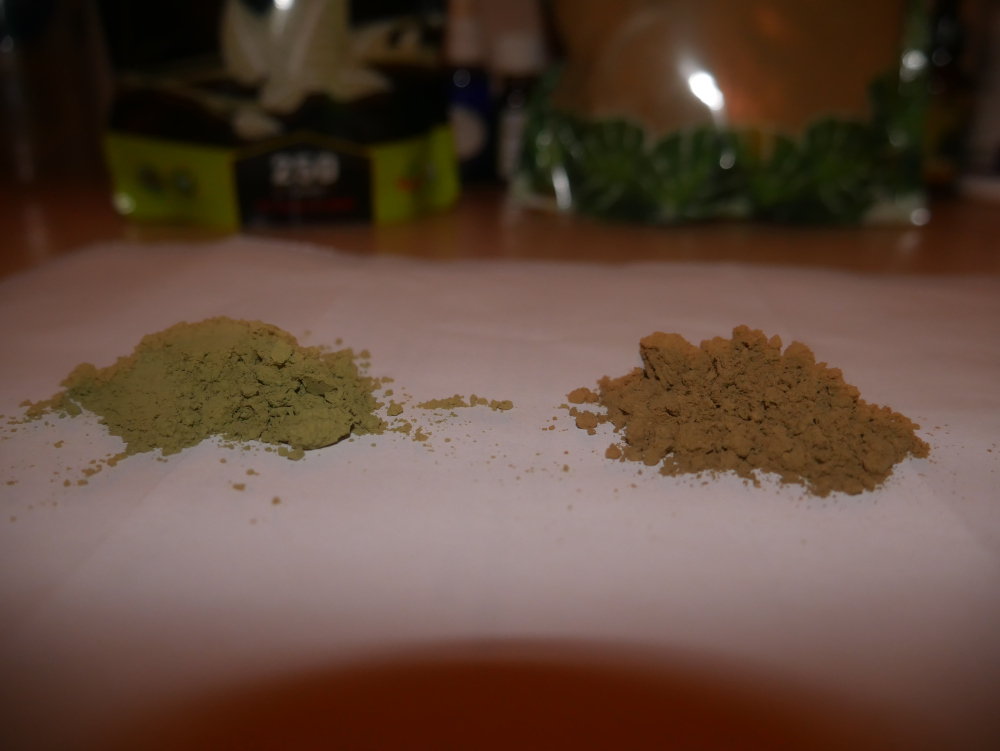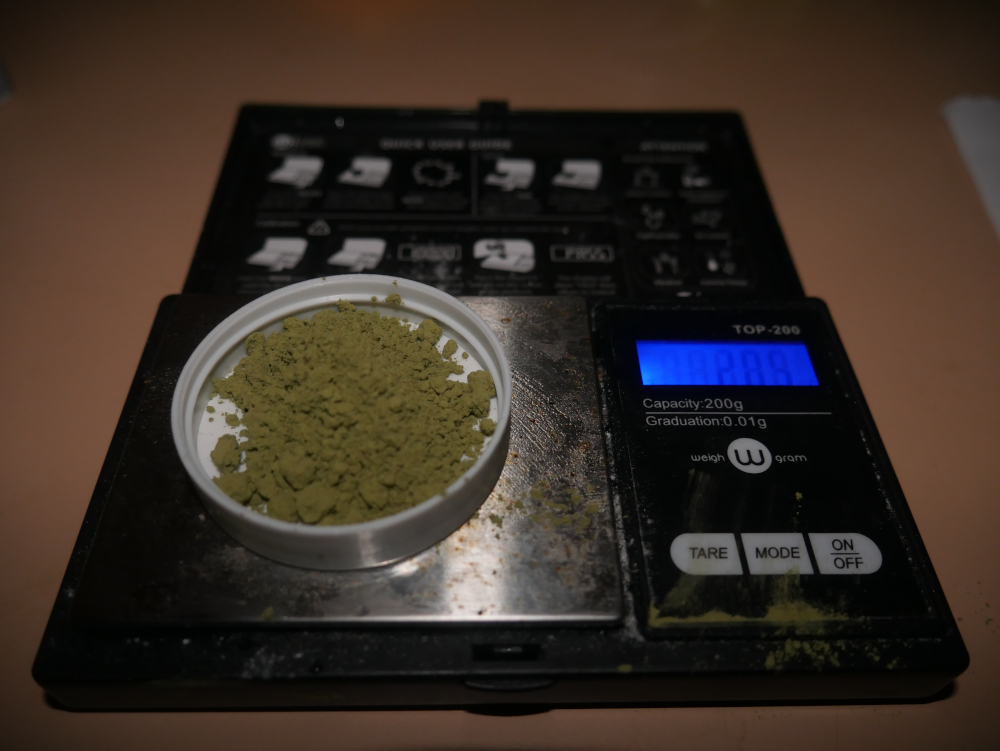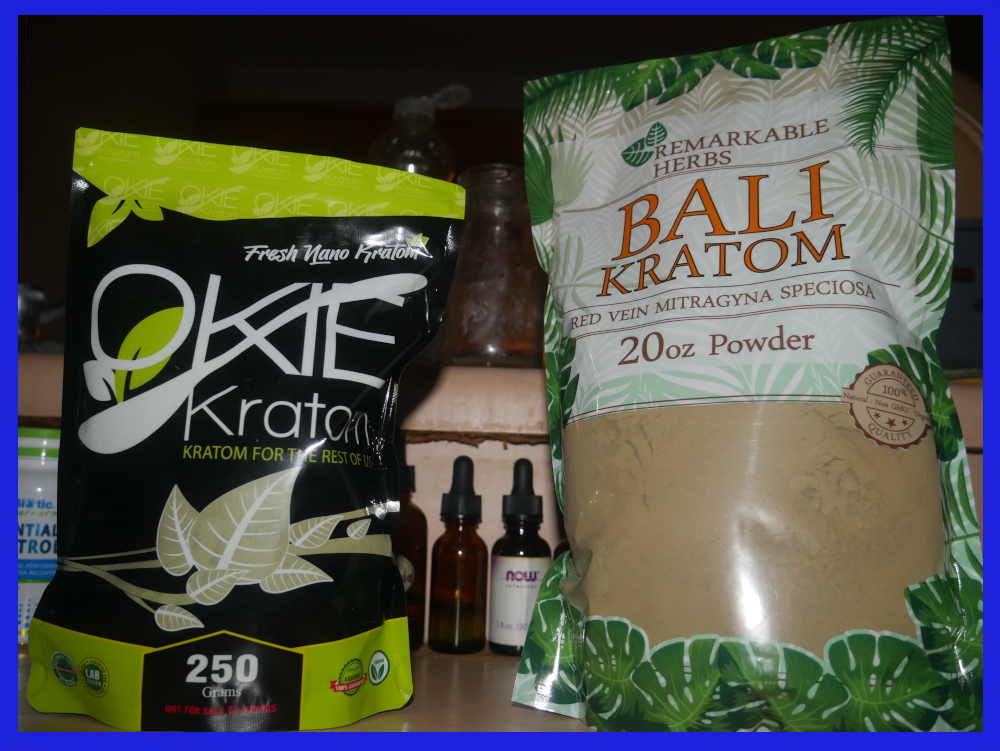I realized I have a lot of Kratom related content on this blog, but really no guide or HOW TO. I of course released my new book called The Big Book of Kratom but I feel new users deserve a free guide to get started. The book will cover the topic in much more depth but this will suffice especially for the casual Kratom user.
What is Kratom?
Bear with me while I rattle off some of the boring Wikipedia stuff you’ve probably heard a thousand times. Kratom is a tree in the coffee family native to SouthEast Asia. Despite belonging to the same family as coffee it shares only a moderate amount of similarities, and is in fact a more serious compound although many will disagree. The locals have been chewing the leaves or brewing tea for hundreds of years, perhaps longer. Kratom displays an ability to interact with the opioid systems in the brain, and new science is revealing interactions with many other systems – the dopaminergic, serotonergic, and adrenergic systems have also been implicated in the overall effect profile. This wide reaching capability of Kratom in the brain is responsible for its many benefits, effects, and side effects. Many use Kratom as an alternative to harmful opioid medications, but others use it for Depression, anxiety, ptsd, and chronic fatigue. Kratom is indeed a swiss army knife and almost appears like a miracle cure – although we will certainly discuss the drawbacks in this post.
Origins
It is theorized American Serviceman returning from Vietnam brought some of the leaves back, allowing Kratom to take root in American soil (figuratively not literally.) It’s also possible asian immigrants brought Kratom to the U.S. during the 80’s, where the Asian population nearly quadrupled in size from increased immigration during that time. Kratom remained relatively obscure until the early 2000’s, where you started to see rumblings of the plant on even more obscure internet forums. A person paying close attention would notice Kratom being sold at local smoke shops and even gas stations. While it remained a largely unknown botanical, it amassed a loyal following, prompting the DEA to take a hard look in 2016.
Adding Kratom to the list of scheduled drugs was proposed but was quickly met with public outcry, causing the DEA to back down. To date, Kratom has garnered an impressive user base and maintains legality in the majority of U.S. states, mostly thanks to the legal leg-work of the American Kratom Association. A handful of states and local counties have chosen to outlaw the plant, and it remains a source of constant anxiety as to what states may do so in the future. I don’t think we’ve ever seen U.S. citizens fight so hard for a substance (and win), and that’s a testament to the power of Kratom.
What does Kratom feel like?
Kratom upon ingestion takes about 10 minutes to take effect on an empty stomach, and up to 30 minutes on a full stomach. (experiment with both.) The user feels a euphoria begin to bubble up to the surface. Suddenly the day has gotten a little brighter, and the people around you are more tolerable. You may even start to like them! Depending on the batch of Kratom, a stimulation is experienced on par with a cup of coffee. I describe Kratom as a drug that operates mostly in the background, meaning you don’t exactly feel like you’ve just ingested a psychoactive substance, even though you have. I do not consider Kratom to be a strong painkiller, but it does take the edge off and is by all measures much safer than synthetic opioids, or even Tylenol which accounts for a dizzying number of deaths each year. Kratom is a cup of coffee with a stronger boost in mood and added euphoria stacked on top. It is mild in its effects but I wouldn’t go so far as to compare it with coffee, because it really is much more robust, and poses more risks for addiction and dependence (in my opinion.) As a background substance you can easily drive, operate heavy machinery, and essentially do anything else without feeling like you’re inebriated or out of control.
Strains
Strains are always a source of confusion for the new Kratom user. Visit any online shop and you’ll be bombarded by hundreds of so called strains – each promising to deliver a unique set of effects. Some strains are marketed for sleep, relaxing, sedation, and pain killing. Others are marketed as more stimulating, euphoric, and energy enhancing. Then there are the various colors – Red, Green, White, and Yellow. Some vendors even market their Kratom as fast, medium, and slow.
It gets confusing but I’ll simplify it:
There is only one strain of Kratom.
You could say there are many different batches of Kratom, but you’d be hard pressed to find a major difference between them at all. At best you will find some batches of Kratom are slightly more stimulating than others, and some will be a little bit stronger. I like to think of Kratom in terms of strength rather than effects. Most Kratom will be more or less the same regarding effects, with only slight variations in strength and potency. If you think of coffee, some coffee is strong while other brews are weak. All coffee offers pretty much the same experience, but some will of course be more potent and deliver more energy than others. It’s not like Cannabis where there are fundamental differences of effects between the strains.
With that said, it’s worth discussing the various colors and what they really mean. There are minor differences between the colors but not as much as you’d think. Colors have a dual meaning. On one level they can refer to the vein of the Kratom leaf which changes depending on the maturity level of the tree. Kratom veins in early maturation are red, and as the leaves mature the veins change color to green or sometimes white. Most Kratom leaves are picked while the veins are red, as they remain red for the majority of the trees maturity cycle. Each batch of Kratom leaves are then processed and dried under different conditions to manipulate the alkaloid profile, as well as the color of the powder. You will see some Kratom powder has a redder hue, while other powders are much more green. The color variation and alkaloid profile is a direct result of how the leaves are processed and dried. The veins of the leaf have little to do with the color. In fact, in most cases the veins (sometimes called “bones”) of the leaf are discarded during processing.
Red – What we call “Red Vein” Kratom, is Kratom that’s typically dried 100% outdoors. Exposure to the UV rays is what gives this Kratom its darker color. Red Kratom is known for its painkilling properties, and is generally regarded as the least stimulating of the colors. It works well for pain especially at night when you don’t want any added stimulation.
Green – Green Kratom is the more stimulating color, and this particular variety is never allowed to dry outdoors. Instead, green Kratom is dried indoors. This is what gives it a greener hue and favors a more stimulating experience. It’s going to feel a lot like a Red but is certainly going to deliver a bigger pep in your step. Even Red Kratom can be stimulating, but such effects are slightly more pronounced with green.
White – White Kratom is cured using a half-and-half method. The leaves are allowed to dry indoors and then they’re taken outdoors in the UV rays. White Kratom does have a subtle white hue, and this once again is due to the unique processing applied to whites. Some say whites are the most stimulating variety, but I’ve always found them to be less stimulating than the greens, but more stimulating than reds.
Yellow – Yellow Kratom is a simple mixture of red and green Kratom powder. If you mix red and green colors, you get yellow. It’s worth noting there are no yellow veins on Kratom leaves, so a yellow is always a mix of the others. Each vendor has their own ratios, but you can mix them yourself if you want.

I have found through years of using Kratom, Red powder is always the least stimulating and green powder is always the most. Don’t pay attention to the catchy marketing names vendors place on their products. Pay more attention to individual batches and judge by the color of the powder and overall potency of the batch. In the past I’ve had supposedly “Red” Kratom powder that was much more green in hue, and this indeed felt much more like what I’d expect a green to feel like – stimulating. Many vendors will mix 2 different types of Kratom together and give it a catchy name – this is for marketing purposes and shouldn’t be held in high regard.
Dosing and frequency
A starter dose of Kratom may be as little as 500mg and as high as 4 grams. If you’re new, take your weight into consideration. If you’re lighter on the scale consider starting with a single gram (any Kratom of your choice) and go from there. If you don’t see any effects at this starting dose, bump your dose up by a gram. Beware of taking a dose too large which can result in what’s commonly called the “wobbles” – Nausea and dizziness being the most prominent side effect of a dose too big. Kratom has a tendency to punish you if you push the limits. Start small and assess how you feel. Laying down and riding it out is the best way to combat the wobbles, and a little bit of raw ginger goes a long way.

You can take this dose in a few different ways. A common method is crudely called the “toss and wash.” Simply weigh out your Kratom using a digital scale and dump everything into your mouth. Then, take a big gulp of water and swallow. Some find this method problematic and opt to make Kratom tea, or they purchase capsules. Make the tea like you would anything else – soak the Kratom in warm water and then strain. Tea also reduces the likelyhood of constipation. We know opioids produce constipation but we also know Kratom does not function like a traditional opioid. It’s thought that most of the constipation is due to ingesting the raw plant matter, not necessarily any biological function related to opioids. Spruce up the tea with honey, agave, or sugar and it can actually taste somewhat palatable. Double your dose if you make the tea, as water can never extract 100% of the alkaloids. For example, if you usually take 2 grams of Kratom, use 4 grams when making tea.
You may think about just mixing the Kratom into water or juice, but Kratom is hydrophobic and does not mix well. It can be done but it creates quite a mess in the cup. Most find the toss and wash is the cleanest/most effective solution.
Moderating
It is widely accepted that one should limit their Kratom usage. Kratom will produce a dependence over time, and this dependence increases the more you take it. A bullet proof system might include taking Kratom only a few times a week. Taking Kratom every single day is problematic unless you come to terms with being dependent. A dependence on Kratom is not the end of the world, but you don’t have to journey far to discover just how difficult the withdrawals can be if you choose to quit in the future. The experience can range from mild to debilitating. It’s worth reading a few of these stories and allow the reality to set in. I detail my own story with Kratom in my first book, and it’s worth a read to explore a side of Kratom many in the community refuse to talk about. Kratom is a drug, and there are consequences to sustained usage. Much of these consequences take the form of unwanted side effects like constipation, loss of libido, irritability etc. Many side effects mimic the side effects you see with anti-depressant medications. People also suspect Kratom of negatively impacting hormones even though no studies have proved this. Losing hair and libido are 2 very common side effects you’ll hear from daily Kratom users. I often find the comparisons to coffee rather ignorant, because Kratom withdrawals are indeed much more harrowing and the side effects are more pronounced. This speaks to the strength of Kratom even though it appears to be a mild botanical. Don’t let it fool you, it can be extremely difficult to quit once dependence sets in. Those prone to addiction will find Kratom even more problematic in the long term.
There are some ways to avoid the most dire of circumstances. The first is simply putting as much time between doses as possible and never going over a certain amount in a day. If I wanted to stay relatively safe, I wouldn’t touch it more than 3 times a week and I’d keep my doses at or below 5 grams per day. This may be unreasonable for you especially if you deal with chronic pain. In that case, taking Kratom multiple times per day may be a risk you’re willing to take, and many do just that. However, if your condition is not as severe, consider limiting your Kratom to only a few times per week and do not exceed 5 grams per day. This will ensure your risk of side effects remains low, and you’ll never have to deal with nasty withdrawal symptoms. There is no magic formula though, listen to your body and you will find a way that works for you. If you find moderating your Kratom usage difficult, consider that you may have addictive tendencies. Tread with caution.
Is Kratom dangerous?
I would say Kratom poses minor risks compared to most drugs. This is not to say the risk is zero. Kratom advocates love to say Kratom is 100% safe but this is a ridiculous statement indeed. No drug poses zero risks and we have documented cases of overdoses and deaths. Yes, most of the Kratom related deaths involved other drugs, but some did not. The Tampa Bay Times discovered while most did involve other substances, 46 deaths were attributed to Kratom alone. Many Kratom advocates will scoff at this and scream “conspiracy!” but there’s no reason not to believe this report. The article went on to say in many of these deaths there were also preexisting health conditions. This is not too far fetched to believe and doing the math, you’d see Kratom is still much safer than anything they pedal at the pharmacy, or even over the counter at your local CVS. However, the risk is never zero!
Kratom has also been shown to inhibit enzymes responsible for clearing other drugs from the system. This can be quite problematic especially if you’re using Kratom alongside other substances. It is generally recommended to avoid combining Kratom and other drugs, as this greatly increases your chances of an adverse event. The truth is there’s still a lot we don’t know, but we have enough data to suggest Kratom is safe enough. We know Kratom does not depress the respiratory system like traditional opioids, and this is good news.
Even the FDA has admitted the risk of overdose is “rare”:
“FDA has warned consumers not to use kratom because of the risk of serious adverse events, including liver toxicity, seizures, and substance use disorder (SUD). In rare cases, deaths have been associated with kratom use, as confirmed by a medical examiner or toxicology reports. However, in these cases, kratom was usually used in combination with other drugs, and the contribution of kratom in the deaths is unclear.”
Healthy individuals with no preexisting conditions should not worry about immediate dangers to their health, but they should still monitor their usage to assure they keep their dependence in check. Keep in mind the strength and potency of Kratom products plays a big role. Extracts for example are much stronger than powder and contain higher levels of Mitragynine, the main psychoactive alkaloid. I recommend avoiding extracts completely and sticking to powder. Vendors are now starting to display the amount of Mitragynine on the package so you know exactly what you’re getting.

Final thoughts
Kratom is certainly an interesting botanical with a lot of potential. It has given many people control of their life, especially for the opioid addicted and chronic pain patients. In the end your experience with Kratom might differ from the norm, and you may not get much out of it at all. I’ve introduced Kratom to a few individuals, all of which had no response whatsoever! This was shocking to me considering my own experience, and reading other testimonials. It goes to show that you never really know how you’ll respond, or what value you’ll get if any at all. Be aware of the low risk Kratom imposes, but don’t be fearful of giving it a shot if you’ve tried everything else. It could be a game changer, or it could be something that ends up sitting on the shelf untouched.
If you want to dive deeper I recommend my latest book, or if you’d like to read about the darker side, my first book details Kratom from a completely different perspective.
Thank you for reading!
Join up for exclusive giveaways!
Enter your email address to qualify for my monthly nootropic giveaways



Great guide, picked up your first book. Good stuff brother 👍